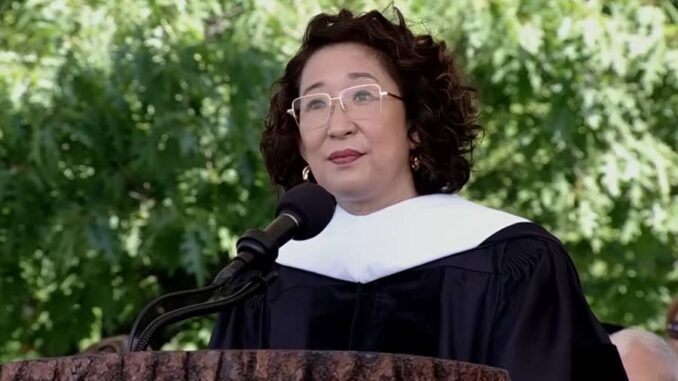
What Really Happened Behind the Scenes: The Crucible of Creation
We, the audience, sit before the glowing altar of our screens, mesmerized by the intricate dance of story and character. We witness triumphs and tragedies, love and loss, all delivered with a polished precision that belies the messy, human alchemy churning behind the velvet curtain. We imagine harmonious creative teams, brilliant minds seamlessly weaving narratives, actors effortlessly embodying their roles. But sometimes, a crack appears in this perfect façade, a whisper of the true, vibrant chaos that often births brilliance. Sandra Oh’s candid revelations about her disagreements with Grey’s Anatomy writers are one such illuminating crack, pulling back the gossamer veil to expose not a flaw, but the very crucible of creation.
The magic of television lies in its illusion. From the first pilot episode to the final, tearful farewell, a meticulously crafted world unfolds before us. Characters become extensions of our own lives, their journeys mirroring our hopes and fears. For an actor, particularly one as deeply invested as Sandra Oh was in her portrayal of Dr. Cristina Yang, that connection transcends mere performance. Cristina was not just a role; she was a being, nurtured and breathed into life by Oh’s profound understanding of her motivations, her vulnerabilities, her fiercely guarded heart. When an actor embodies a character so completely, they become its most ardent advocate, its truest steward.
This is where the creative friction inevitably sparks. A writer, an architect of worlds, operates from a macroscopic perspective. They juggle intricate plotlines, character arcs spanning years, the demands of network executives, and the relentless churn of episode deadlines. Their vision for a character, while deep, is part of a grander, evolving tapestry. A single line, a sudden decision, or a surprising romantic pairing might serve a crucial plot point, push another character’s development, or fulfill a long-term narrative strategy. It is, in essence, a strategic game of chess played with human emotions.
Sandra Oh’s disagreements were, therefore, less about personal animosity and more about the clash of two profoundly held truths about the same fictional soul. Imagine a scene where Cristina, known for her stoicism and professional ambition, is asked to react in a way that feels uncharacteristically soft or overtly emotional. For the writer, it might be a necessary beat to advance a romantic storyline or expose a hidden layer. For Oh, who had lived inside Cristina’s skin for a decade, it could feel like a betrayal of her essence, a discordant note in the finely tuned symphony of her character. "No," we can almost hear her arguing, "Cristina wouldn't do that. That’s not her truth."
This isn't a unique phenomenon to Grey's Anatomy. It's a fundamental tension in almost any collaborative creative endeavor. A director might clash with a cinematographer over a shot, a musician with a producer over a lyric, a painter with a patron over a color. These disagreements are not signs of dysfunction, but rather the vigorous wrestling matches that often precede profound breakthroughs. They are the friction that polishes the gem, the heat that forges the steel. An actor's insistence on character integrity, born from their intimate experience, can push a writer to re-evaluate, to find a more authentic path, or to deepen the reasoning behind their choice. Conversely, a writer’s unwavering vision can challenge an actor to explore new dimensions of their character, pushing them beyond their comfortable interpretations.
What Sandra Oh’s revelations truly illuminate is the passionate ownership creators feel over their work. It’s the difference between seeing a character on paper and being that character, between crafting a plot point and living through it. It’s the understanding that while the writers plot the destination, the actor navigates the internal landscape of the journey. And sometimes, those maps diverge.
Ultimately, the iconic status of Cristina Yang, the enduring legacy of Grey’s Anatomy, is a testament to the fact that these behind-the-scenes negotiations, these fervent arguments, often yield a stronger, more nuanced product. It reminds us that the polished perfection we see on screen is rarely effortless. It is the result of countless hours of discussion, debate, compromise, and unyielding passion. Sandra Oh’s willingness to share this facet of her experience doesn’t diminish the show’s brilliance; instead, it humanizes it, showing us that the real magic often happens not in the quiet solitude of a writer’s room, but in the vibrant, sometimes contentious, crucible where passionate artists converge, each fighting for the truest expression of their shared creation. What really happened behind the scenes was not a breakdown, but the beautiful, messy, and necessary process of creation itself.
